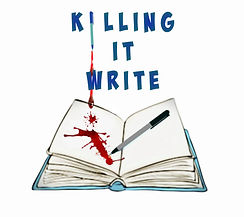Weave a Story Your Readers Will Love With Killer Narration.
- Gina

- Jul 24, 2022
- 4 min read
Updated: Jan 16, 2025
How? By making sure you include all five elements that bring a story to life.
Barbie cannot live on her perfect body alone. She needs fashionable clothes, a big house, a car with room to haul all of her friends around, and a boyfriend with potential to truly come alive. Just as that Corvette you’ve always wanted won’t be cherished for long if it doesn’t possess an engine with all the power a car like that deserves, such as fancy wheels, an awesome paint job, butter-soft leather seats, and plenty of fuel for all those relaxing drives. So, bring your readers a story they will not only see but also one they'll truly experience by including all five elements of narration.
What five elements am I talking about? Dialogue, Action, Description, Internal Monologue, and Exposition.
In a movie, you see the action. You see the actor’s body language, facial expressions, etc. It is the actors and actresses, the cameramen and women, and the directors (just to name a few) who bring a film to life for your enjoyment. But with a book, it’s all up to the author. And their editor and publisher, of course.
So, here’s an exercise I want every one of you to do that will take no more than five, maybe ten minutes of your time. I want you to take control of that TV remote (tell whoever to give you a break) and turn the channel until you come across a movie, preferably action or adventure, but not mandatory. Now, close your eyes and listen. No peeking!
Do you feel the tension? The excitement or joy? What I’m asking is, can you feel or hear the emotion in the background music and the tone of the actors’ voices? That’s what you as an author need to accomplish and to do that, all you have are your words.
Hear me again. As writers, all we have to bring that emotion, that tension and reality to our stories and to bring our characters to life are words.
Dialogue: Your dialogue needs to ring true to make those characters feel real, so when writing your dialogue, take the time to truly put yourself in your characters' heads. How would he or she speak? For example, not using contractions isn’t formal, but stiff, so think twice and then think twice again before you decide you want to make a particular character sound different by not using contractions in their speech. Would the character curse? Do they stutter or speak with an accent? Maybe they have a quirky way of speaking or phrases they use repeatedly.
Action: When thinking action, think not only of body language and facial expressions but also keep in mind your character’s physical and mental actions and reactions to what's happening in the storyline. And for goodness sake, remember that your readers can’t visualize these things unless you give them those visuals with your words.
Description: And that’s where description comes in, which should and will be another conversation, but for now, you, the author, have to give us that description. You have to tell us (or hopefully SHOW us, which again is another conversation altogether) what the characters are doing and feeling. You need to give us those facial expressions, the tone of voice, the body movements, and let’s not forget the scenery around your character. For example, is the space Tony’s hiding in tight, dirty, hot? Does he smell the salty air of a nearby ocean, or is the stink of his neighbor’s cabbage soup seeping in from under the door? Can he hear the intruder’s heavy breathing or the scrape of his shoes against the wood floor? What does Tony see between the crack in the doorjamb? A reader’s imagination may have no limits, but a reader can be severely limited by the author.
Internal Dialogue: And that brings me to internal monologue. If you want your reader to give a bleep if Tony gets his throat cut or not, the reader needs to connect with him in some way and to do that, the reader must understand him. What’s he thinking, what’s he feeling, who’s he protecting and why?
Exposition: Then there’s exposition which is how a writer gives the reader crucial elements like background information about the characters, the settings, prior events... For instance, Tony waited, his breath held, until he heard the telltale creak in the floorboard at the top of the stairs, the one he knew from his years of sneaking out of the house was impossible to miss. And the split second he heard that squeak, Tony bolted for the front door making his escape.
A proper balance of these five elements will give your reader a story they’ll remember, and with any luck, they'll be telling their friends about it, too. What do I mean by balance? Well, that, my fellow writers, is another subject for another blog post.
But you might consider making time to check out my online writing workshops as well. Just click over to the Writing Workshops page on this website.
Happy Writing!








Me too! Bring in those senses so the reader can really sink into the story.
Very cool excersize. I love when writers add in the harder senses. Like taste. Especially when it’s not food!